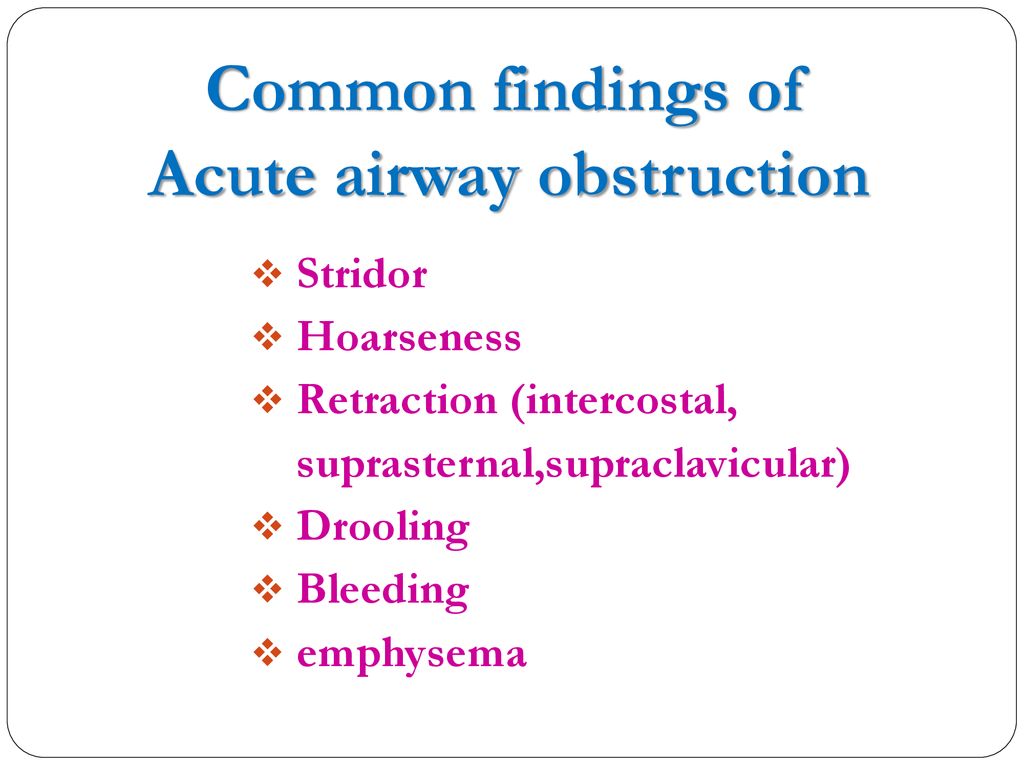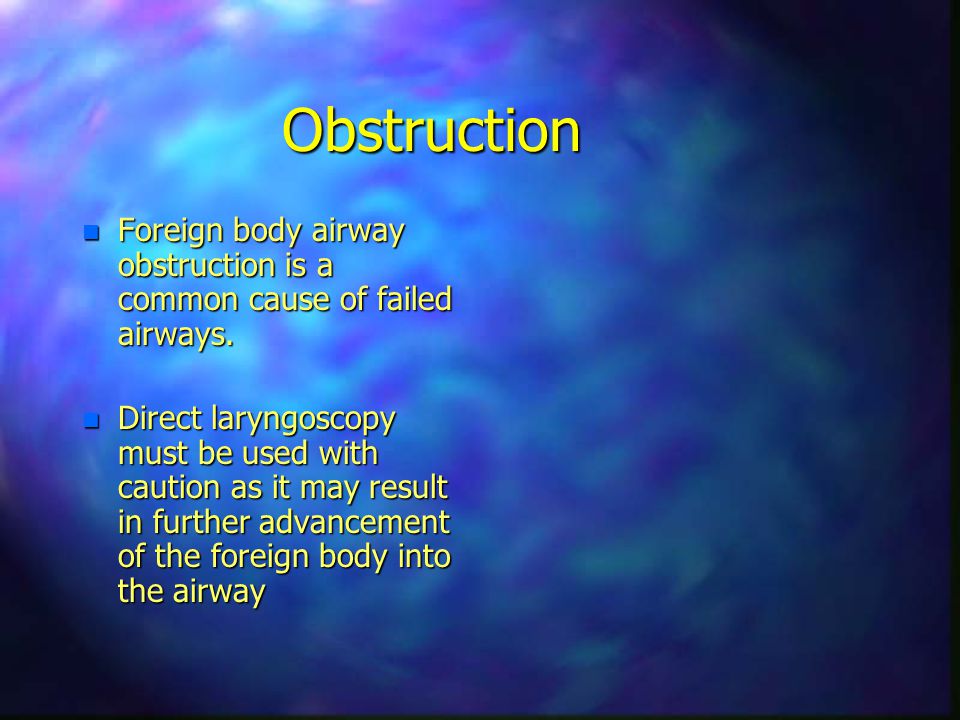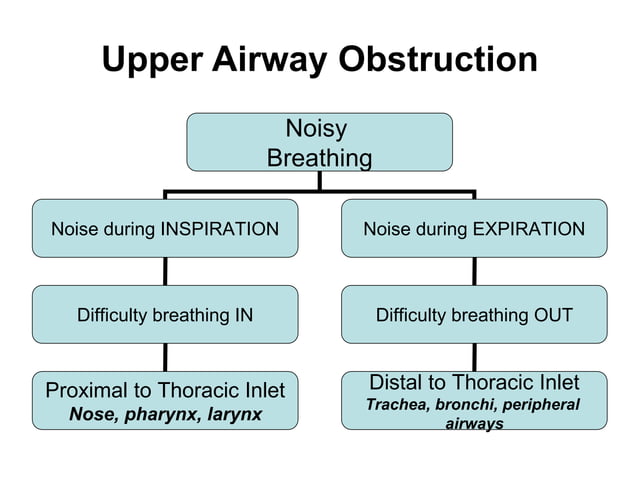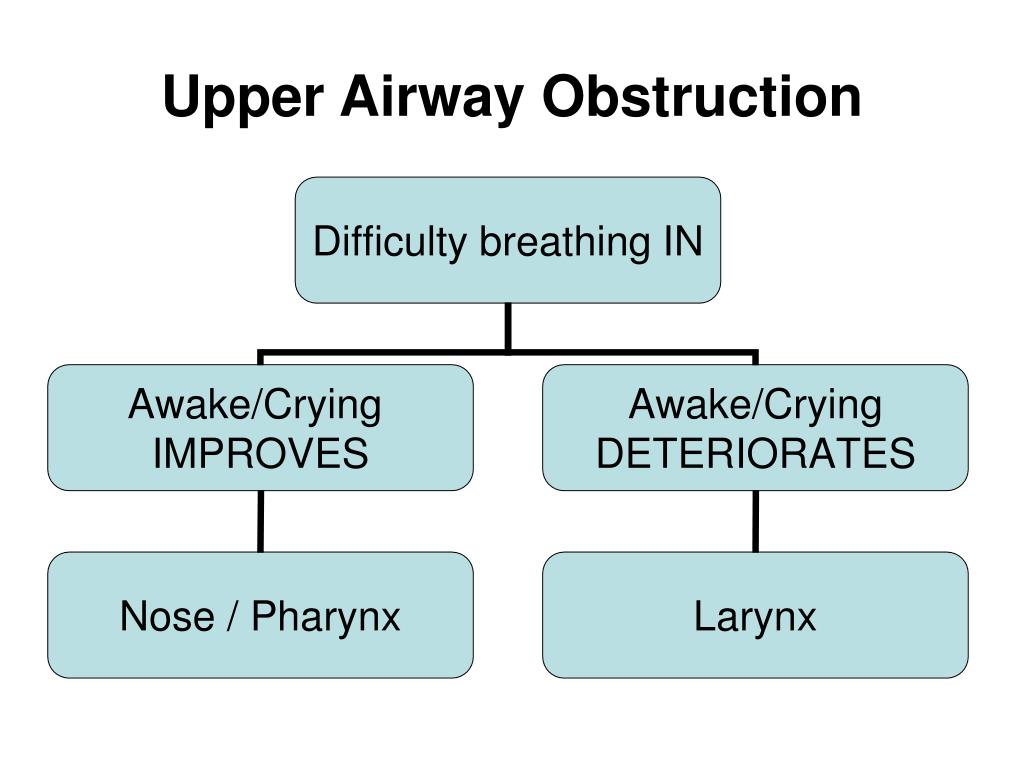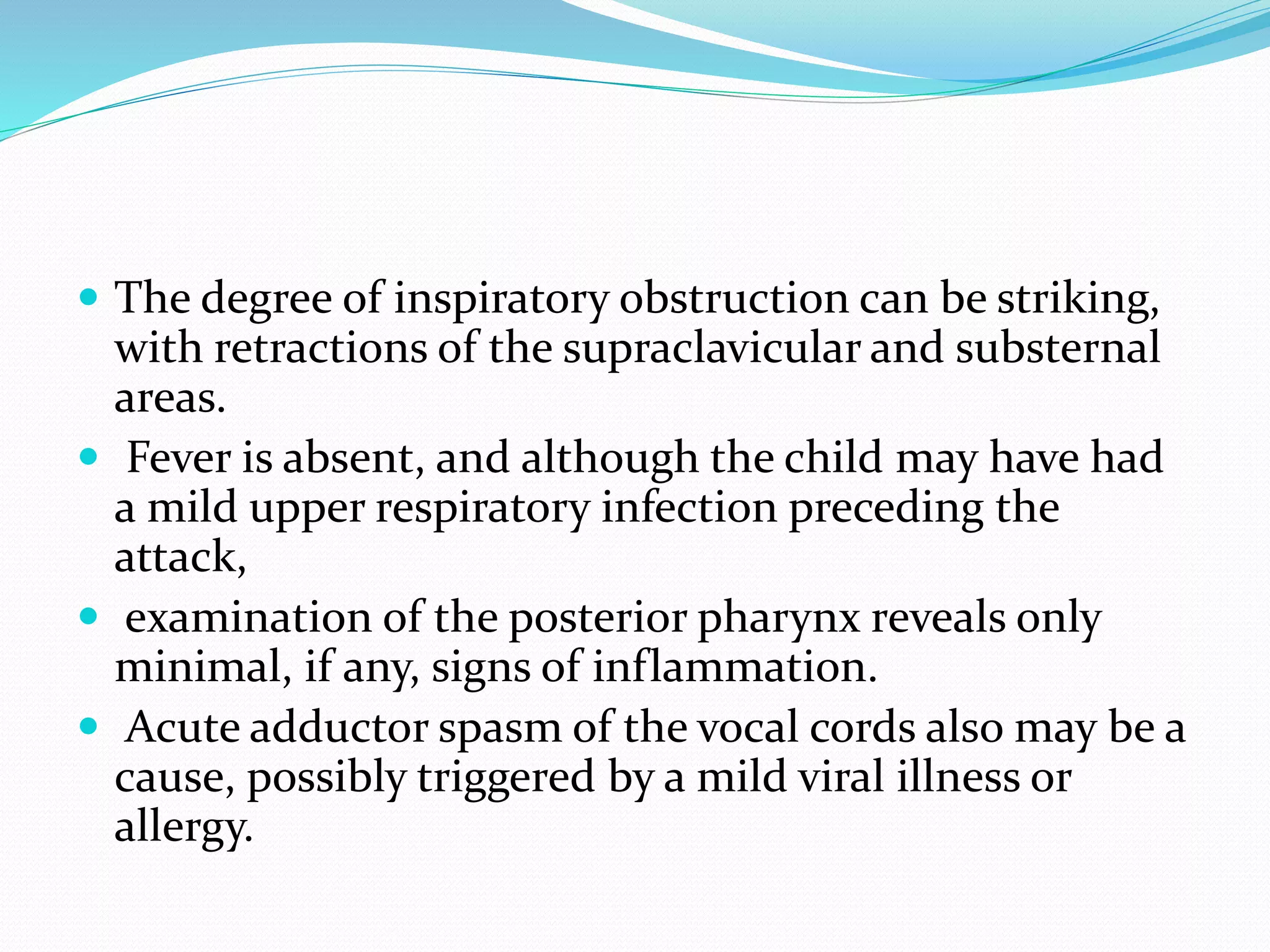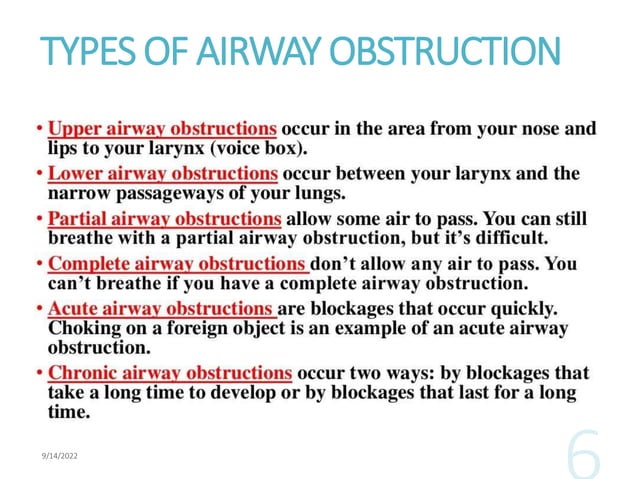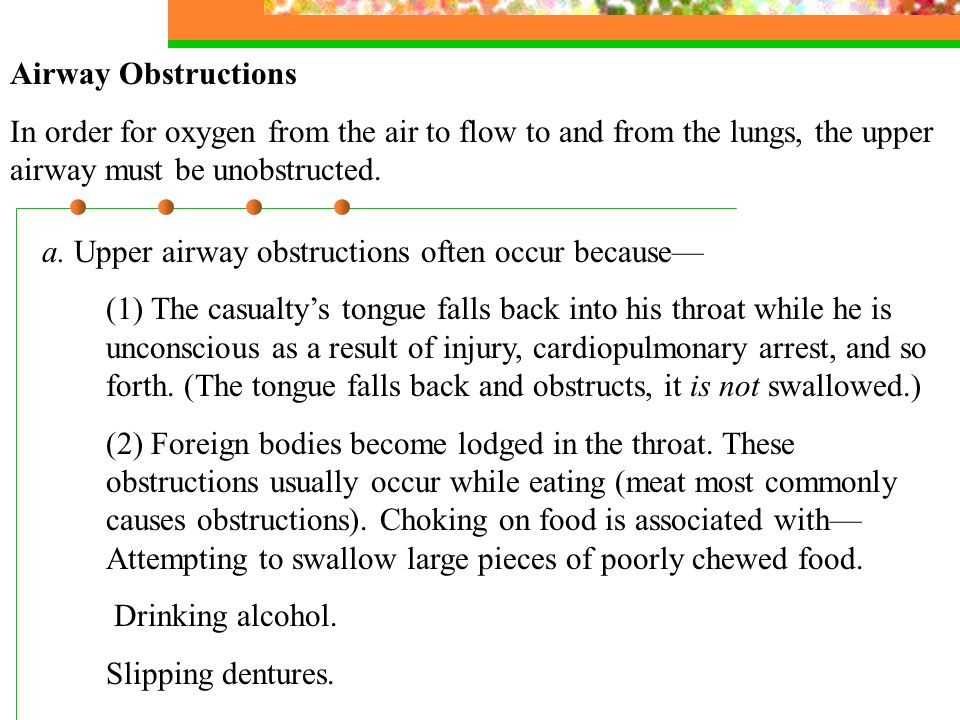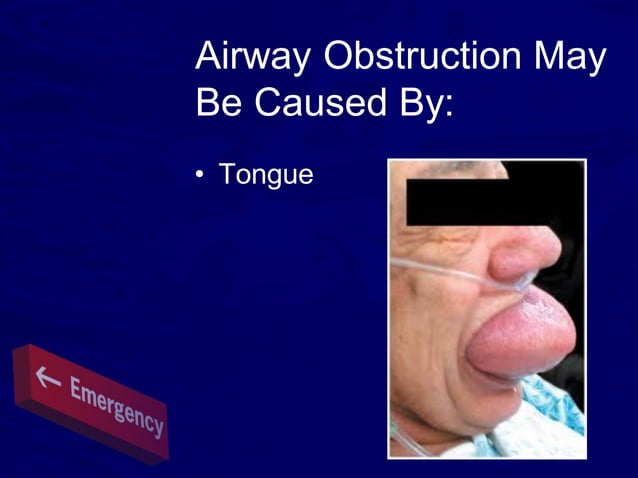All Of The Following Can Result In Airway Obstructions Except

Choking, a terrifyingly common emergency, occurs when the airway becomes blocked, preventing oxygen from reaching the lungs. Knowing the causes of airway obstruction and, crucially, what does *not* cause it, is vital for effective prevention and response. Understanding the nuances can save lives and reduce panic in critical situations.
This article explores the various causes of airway obstruction, distinguishing them from conditions that do not directly lead to it. It clarifies common misconceptions and provides essential knowledge for both the general public and healthcare professionals. We will look at how foreign objects, anatomical factors, and medical conditions can lead to blockages, and contrast these with situations that, while concerning, do not inherently obstruct the airway.
Common Causes of Airway Obstruction
Several factors can contribute to airway obstruction. These range from the accidental ingestion of foreign objects to underlying medical conditions.
Foreign Body Aspiration
Foreign body aspiration, particularly common in children, involves inhaling objects like toys, food, or small parts into the airway. This can cause a partial or complete blockage, leading to coughing, wheezing, or difficulty breathing. Prompt action, such as the Heimlich maneuver, is crucial in these cases.
Anaphylaxis
Anaphylaxis, a severe allergic reaction, can cause swelling of the tongue and throat. This swelling can significantly narrow or completely obstruct the airway. Epinephrine auto-injectors are often used as a first-line treatment to reverse the effects of anaphylaxis.
Infections
Certain infections, such as epiglottitis (inflammation of the epiglottis) or croup (inflammation of the larynx and trachea), can lead to airway swelling and obstruction. These conditions often require immediate medical intervention, including antibiotics or, in severe cases, intubation.
Trauma
Trauma to the face, neck, or chest can cause airway obstruction. Swelling, bleeding, or structural damage can all compromise the airway. Establishing and maintaining a clear airway is a priority in trauma management.
What Does *NOT* Typically Cause Airway Obstruction?
It's equally important to recognize situations that, while potentially concerning, do not directly cause airway obstruction. This knowledge prevents unnecessary panic and ensures appropriate action.
Common Cold
While a common cold can cause a runny nose, congestion, and cough, it does *not* typically lead to airway obstruction in adults. In infants and young children, excessive mucus can occasionally contribute to breathing difficulties, but a complete obstruction is rare.
Asthma (Well-Managed)
Asthma, a chronic respiratory disease, causes inflammation and narrowing of the airways. With proper management, including the use of inhalers, asthma does not usually result in complete airway obstruction. Uncontrolled asthma, however, can lead to severe bronchospasm and breathing difficulties, though still distinct from a foreign body obstruction.
Anxiety
Anxiety can cause rapid breathing (hyperventilation) and a feeling of shortness of breath. While these symptoms can be distressing, anxiety does *not* physically obstruct the airway. Addressing the underlying anxiety is crucial in managing these symptoms.
Muscle Cramps
Muscle cramps, even in the chest or diaphragm, do not directly obstruct the airway. While they can cause discomfort and difficulty breathing, the airway remains open. Treatment focuses on relieving the muscle spasm.
Differentiating Causes and Responses
Knowing the difference between these conditions is vital for appropriate response. Misidentifying a condition can lead to delayed or inappropriate treatment.
For example, performing the Heimlich maneuver on someone experiencing an anxiety attack would be not only ineffective but potentially harmful. Similarly, administering epinephrine to someone with a common cold is inappropriate and dangerous.
Healthcare professionals rely on careful assessment, including observation of breathing patterns, auscultation (listening to lung sounds), and sometimes imaging studies, to accurately diagnose the cause of respiratory distress.
Impact and Significance
Understanding the causes and non-causes of airway obstruction has significant implications. It empowers individuals to act effectively in emergencies, improves patient outcomes, and reduces unnecessary anxiety.
Public awareness campaigns can educate people on recognizing the signs of choking and performing life-saving maneuvers. Training programs for healthcare providers ensure they can quickly and accurately diagnose and treat airway obstruction.
By dispelling myths and providing accurate information, we can create a more informed and prepared society, ultimately saving lives.
Conclusion
Airway obstruction is a serious condition with potentially life-threatening consequences. While various factors, such as foreign bodies, anaphylaxis, and infections, can cause it, certain conditions like the common cold, well-managed asthma, anxiety, and muscle cramps generally do *not* lead to airway obstruction. Recognizing these distinctions is crucial for providing appropriate and timely care. Education and awareness are paramount in empowering individuals and healthcare professionals to respond effectively to respiratory emergencies and prevent unnecessary panic.



.jpg)
